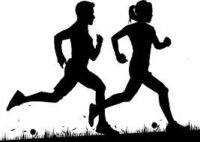Whether or not athletes with eating disorders should limit their exercise is a complicated topic. Is purposeful training counter-productive to healing and recovery from an eating disorder (ED)? What about compulsive exercisers who convert daily activities into a workout? For example, excessively walking up and down the stairs in their house, running errands by foot rather than driving three miles in a car, or going on a very long walk with a friend.
In an Alsana Eating Disorder Recovery Center webinar entitled “The Missing Dimension: Current Evidence-Based Strategies for Integrating Movement into Eating Disorders Recovery”, exercise physiologist Brian Cook, PhD presented information on the benefits of incorporating exercise into the lives of those who are recovering from an ED. Here are some key points to ponder if you struggle with finding a healthy balance of exercise in your lifestyle:
- What is the purpose and intent of your exercise? The motive behind exercise should be about finding joy with movement, reducing feelings of anxiety, and sustaining recovery from the eating disorder. An excellent question to ask yourself is, “Is my exercise program joyful—or obligatory?”
- Exercise should promote physical, emotional, and social well-being. Exercise should not deter you from social activities. On the other hand, exercise can be a great way to be social – going on a hike with a friend, organizing a group bike ride, or swimming at the pool with friends on a hot summer day are all examples of exercise promoting social well-being.
- Exercise is an excellent way to learn (or retrain yourself) to listen to your body. It is important to recognize and listen to internal cues your body is giving when you are tired, sore, or feeling the effects of stress. These sensations are ways that your body tells you it needs rest. Listening to your body is an essential aspect of self-care and can help nurture self-compassion and recovery.
- Understand there is no “best” exercise routine. Trying to create a perfect program can easily lead you further down the slippery slope into your eating disorder. Try to identify kinds of exercise you like to do rather than types of exercise you feel you need to do.
- When struggling to find the right balance of exercise, a key mantra to keep in mind is, “Less is more.” The “less is more” mentality shifts away from obsessive or compulsive attitudes towards exercise; this is crucial for ED recovery. More is not always better.
- A second helpful mantra is “Work with your body, not against it.” The concept of working with your body ties back to listening to your body and honoring what it is telling you.
- The bottom line: Exercise during ED recovery is a complicated, sensitive matter. Everyone’s relationship with exercise is going to look different and there is no one size fits all approach. However, with proper guidance and motivation, incorporating healthful exercise into ED recovery can help sustain recovery.
- Working with a registered dietitian (RD) who specializes in sports nutrition (CSSD) can help a compulsive exerciser transform into stronger and more powerful athlete who is less-likely to get injured.
Written by guest blogger Emily Stewart, former world-class Irish dancer, current Simmons University nutrition graduate student, and aspiring sports dietitian.

